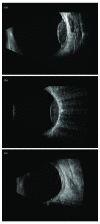Recent advancements in the management of retinoblastoma and uveal melanoma
- PMID: 29755733
- PMCID: PMC5911936
- DOI: 10.12688/f1000research.11941.1
Recent advancements in the management of retinoblastoma and uveal melanoma
Abstract
Retinoblastoma and uveal melanoma are the most common intraocular malignancies observed in pediatric and adult populations, respectively. For retinoblastoma, intra-arterial chemotherapy has dramatically improved treatment outcomes and eye salvage rates compared with traditional salvage rates of systemic chemotherapy and external beam radiation therapy. Intravitreal injections of chemotherapy have also demonstrated excellent efficacy for vitreous seeds. Uveal melanoma, on the other hand, is treated predominantly with iodine-125 plaque brachytherapy or with proton beam therapy. Major strides in uveal melanoma genomics have been made since the early 2000s, allowing ocular oncologists to better understand the metastatic risks of the tumor on the basis of specific genetic signatures. Loss-of-function mutations of the BAP1 gene are associated with the highest metastatic risk, whereas gain-of-function mutations of SF3B1 and EIF1AX often confer a better prognosis. Expression of a cancer-testis antigen called PRAME (preferentially expressed antigen in melanoma) has been shown to increase metastatic risks in both low-risk and high-risk melanomas. New therapeutic approaches, including molecular therapies and nanoparticle phototherapy, are currently being investigated as alternative treatment modalities for uveal melanoma.
Keywords: ocular tumors; retinoblastoma; uveal melanoma.
Conflict of interest statement
No competing interests were disclosed.Competing interests: Aura Biosciences – Clinical Advisor ICONIC Therapeutics – Consulting Castle Biosciences – ConsultingNo competing interests were disclosed.
Figures


References
-
- Abramson DH, Schefler AC: Update on retinoblastoma. Retina. 2004;24(6):828–48. - PubMed
Publication types
LinkOut - more resources
Full Text Sources
Other Literature Sources

